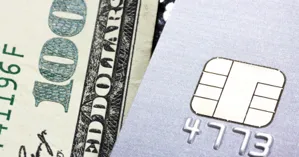
Starting your freelancing career is exciting but nerve-racking at the same time. This is especially true if you're about to go full-time. The biggest problem most freelancers face is how to price their services. We can help you with that. Here are six tips for pricing your services as a freelancer.
1. Determine What You Want to Earn

How much money do you want to make annually? Once you have that figure, break it down into monthly and weekly numbers. How much do you have to make per week to earn your monthly and yearly pay? It’s important to have a goal so you know how much you’ll need to charge per hour or project per week to achieve that goal, and to develop effective pricing strategies.
2. Research Other Freelancer Rates

Go on Fiverr, Upwork, Freelancer, etc., and see what the going rate per hour is. Google rates for your industry. You need to know what other freelancers are charging to see if you’re in the middle or high end based on your monetary goal. Understanding the current market rates is a crucial part of freelance pricing, helping you to position your services competitively.
3. Establish Your Expenses

What are the costs of being a freelancer? You need to list expenses like software fees, office equipment and the big one, taxes. You'll need to pay taxes on all this work, so incorporate taxes into your price. If you have business expenses, you should be able to reduce your tax liability to a certain extent. So, keep track of everything you purchase for your business. Software like QuickBooks can help you track expenses and income. It would be wise to use something like it.
4. Evaluate the Client

Do a little research; what do you think a particular client can afford? For example, if it's a long-term value for a client, you may ask a higher price. Also, consider how long and how much work you've done for the client. If they are consistent, you might want to offer them a better price to keep them happy. But watch that you don't undervalue your work.
5. Consider Your Value

What experience do you bring to the table? Think about all the training, education and experience you have in your particular craft. Determine what you’re worth.
6. Choose Your Billing Method

Do you want to work hourly or on a project pricing basis? Sometimes, the client will determine this. Set your rate per hour. If it’s $65$ per hour, price the job accordingly. If it’s a per-project basis, calculate how many hours it would take to do the work. Then, apply your hourly rate to that number.
7. Understand Different Pricing Models

Understanding pricing models is crucial for freelancers to set their rates and attract paying customers. There are several pricing models that freelancers can use, including hourly pricing, project-based pricing, and value-based pricing. Each pricing model has its pros and cons, and freelancers should choose the one that best suits their freelance business and services.
Hourly pricing is straightforward and easy to calculate. You charge clients based on the number of hours you work. This model is ideal for tasks where the time required is unpredictable. However, it can sometimes lead to clients questioning the time spent on tasks.
Project-based pricing involves setting a fixed price for the entire project. This model is beneficial when you have a clear understanding of the project’s scope and can estimate the time and resources required. It provides clients with a clear cost upfront, but it requires accurate project scoping to avoid underpricing.
Value-based pricing is where you charge based on the value your work brings to the client. This model can be highly profitable if you can demonstrate the significant impact of your work. However, it requires a deep understanding of the client’s business and the ability to articulate your value effectively.
Choosing the right pricing model depends on your services, the nature of your client work, and your business goals. Experiment with different models to find what works best for you and your clients.
8. Raise Your Rates

Raising your rates is an essential part of growing your freelance business. As you gain experience and build a portfolio of work, you can increase your rates to reflect your value to clients. Here are some tips for raising your rates:
-
Assess Your Value: Regularly evaluate the quality of your work, the results you deliver, and the feedback from clients. As your skills and experience grow, so should your rates.
-
Communicate Clearly: When informing clients about a rate increase, be transparent and provide ample notice. Explain the reasons for the increase, such as improved skills, higher demand, or increased business expenses.
-
Showcase Your Success: Highlight your achievements, such as successful projects, client testimonials, and any new skills or certifications. Demonstrating your value can justify the rate increase to clients.
-
Incremental Increases: Instead of a significant jump, consider raising your rates gradually. This approach can be less daunting for clients and allows them to adjust to the new pricing.
-
Target New Clients: Sometimes, it’s easier to implement higher rates with new clients rather than existing ones. Use your updated portfolio and success stories to attract clients willing to pay your new rates.
Remember, raising your rates is a natural part of your freelancing business’s growth. Don’t be afraid to charge what you’re worth.
Final Tips
Here are some final tips for pricing your services as a freelancer:
-
Be Confident: Believe in the value you provide. Confidence in your pricing strategy can help you communicate your rates effectively to clients.
-
Stay Flexible: Be open to negotiating with clients, but ensure that any adjustments still align with your financial goals and the value of your work.
-
Regularly Review Your Rates: Periodically assess your pricing to ensure it reflects your current skills, market demand, and business expenses. Adjust as necessary to stay competitive and profitable.
-
Document Everything: Keep detailed records of your projects, hours worked, and expenses. This documentation can help you justify your rates and make informed decisions about future pricing.
-
Seek Feedback: Ask clients for feedback on your pricing and services. Use this information to refine your pricing strategy and improve your offerings.
By following these tips and continuously evaluating your pricing strategy, you can ensure that your freelance business remains profitable and sustainable. Remember, your time and expertise are valuable, so price your services accordingly.
Conclusion
Your time is valuable, so price yourself accordingly. Ensure that when you choose your billing method, you’re consistent with your price for the project and the hour. However, it’s important to consider whether charging different clients the same amount for similar projects is fair and sustainable. Don’t sell yourself short.



